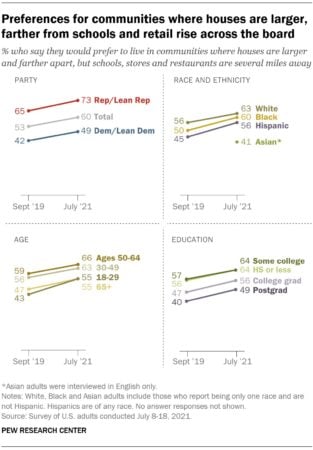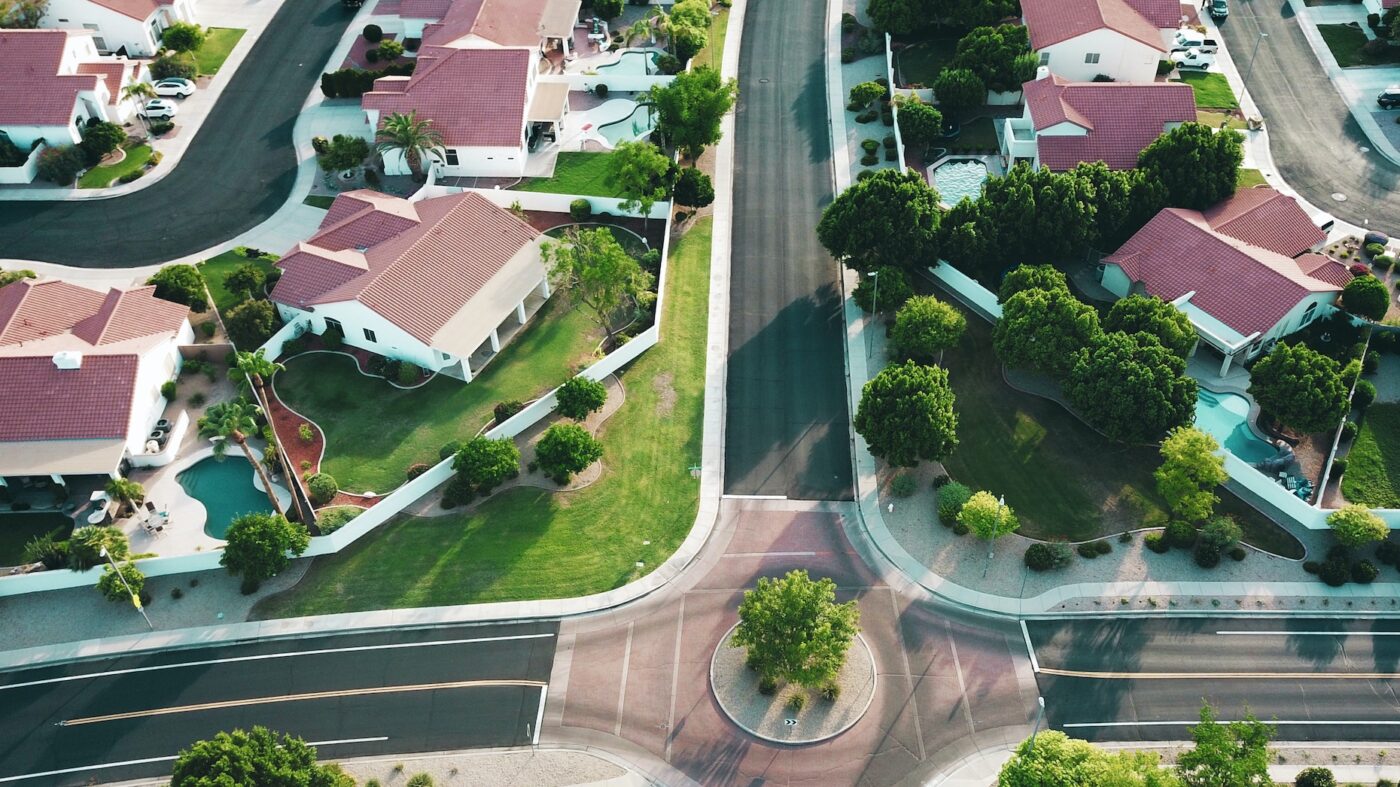Bigger and more spread-out housing is more popular now than it was two years ago. That preference cuts across political divides, as well as demographic categories based on race, education, and age.
Americans’ preference for bigger homes appears to have grown over the last couple of years, while at the same time nearby amenities have become less essential, according to a new report from the Pew Research Center.
The report is based on a survey conducted in July that asked more than 10,000 people about their housing preferences. The findings indicate that today 60 percent of Americans prefer communities in which “houses are larger and farther apart, but schools, stores, and restaurants are several miles away.” That’s up from just 53 percent who said the same thing in 2019.

Credit: Pew Research Center
The report goes on to note that a preference for larger and more spread-out housing has ticked up in multiple demographic categories. For instance, 73 percent of Republicans and Republican-leaning independents want larger and more dispersed homes, up from 65 percent in 2019. But Democrats have also seen a similar shift; today, 49 percent of them want larger and less amenity-adjacent homes, which is up from 42 percent in 2019.
The same goes for age, race, and education, with every category seeing a notable rise in people saying they want bigger homes.
Moreover, in most categories, the preference for bigger homes is now a majority opinion. The only categories for which that preference is still barely a minority position is among Democrats and Democrat-leaning independents, and among people with postgraduate education experience. However, as was the case with Democrats and other groups, the preferences of the highly educated have shifted toward bigger houses since 2019, when a mere 40 percent of respondents in that group said they wanted larger homes.
The report goes on to note that Americans’ preferences have evolved during the spread of COVID-19.
“This shift has occurred during the coronavirus outbreak and the accompanying period of telework, remote schooling, and pandemic-related restrictions on indoor dining and other indoor activities,” the report explains.
That Americans’ housing preferences have leaned toward the suburban and rural during the pandemic isn’t surprising, and a number of previous reports have documented similar shifts. But what is notable about this latest report — in addition to the large size of its respondent pool — is how it breaks down that shift by demographic and finds that the majority of nearly every group in the U.S. would prefer bigger homes with fewer nearby amenities.
The takeaway, then, is that the much-touted return to cities — a trend that was often linked to millennials who apparently preferred the pleasures of big city living — is, at least for now, over.


